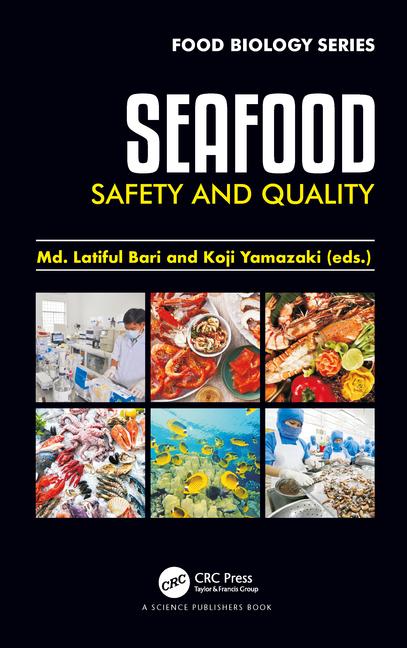Dressed for Added Safety
By Richard Mitchell
New-age protective wear plays a major role in increasing in-plant worker safety.
Meat and poultry plants are becoming safer havens for workers. A drive by operators to reduce the threat of injury by requiring employees to wear protective apparel not only is resulting in fewer incidents, but also is spurring vendors to develop increasingly sophisticated gear.
Demand is growing for safety garments that weigh substantially less than older-generation garments, but are better able to withstand occupational stresses, such as blows from sharp instruments. Stronger fabrics and chains that are more effective in preventing cuts and punctures from knives and other tools of the trade are being incorporated into gloves, aprons, arm guards, body suits, and other items. And the use of lighter materials is causing less strain on workers.
“There is more focus, especially among large processors, on insuring that everyone in the plant has all the proper equipment for safety,” says Robert Maddux, assistant professor of meat science at South Dakota State University in Brookings, SD. “Meat plants still are dangerous places to work. But while ten years ago the operators may have just required persons on the floors to use hardhats or frocks, many now force employees to wear steel-toed shoes and other protective apparel.”
Improving safety
An enhanced focus on worker safety gear — and better educating personnel on safety procedures — is contributing to a sharp drop in plant accidents. About 7.9 percent of workers in meat and poultry packing, processing, and slaughter facilities in 2002 missed workdays because of job-related injuries and illnesses, down from 15 percent in 1991, relays the Washington, DC-based American Meat Institute (AMI) citing research from the U.S. Bureau of Labor Statistics.
The total rate of injury and illness cases fell from 30 percent in 1991 to 11.5 percent in 2002, AMI adds. The largest declines were in meatpacking plants, with rates sliding to 14.9 percent from 45.5 percent in that period. Figures for 2003 are not yet available.
“The meat industry is realizing that while plant work may be difficult and tiring, it doesn’t have to be hazardous to employees’ health,” says Dan McCausland, AMI director of worker safety and human resources.
“Companies know that there isn’t an inexhaustible supply of people power, and it is in their best interest economically and every other way to protect their workers.”
Safer gear
Along with a stronger industry move to safeguard plant personnel are rollouts by manufacturers of enhanced protective gear. Grand Rapids, MI-based Performance Fabrics Inc., which began operations in 2003, markets its line of HexArmor safety equipment that is engineered for greater flexibility and durability, says Steve VanErmen, president of Performance Fabrics.
The HexArmor products, which include aprons, sleeves, and gloves, are constructed of SuperFabric, a patented series of fabric-like materials that were developed by Oakdale, MN-based HDM Inc. SuperFabric is designed to prevent cuts, punctures, and abrasions.
“The price to the meat and poultry industries from injuries in lost time and worker compensation is out of control so everyone is more sensitive of the need to protect employees,” VanErmen says. “It can cost a company an average of $3,000 when a worker gets hurt. We’re aiming to take a significant chunk out of that expense.”
In late January, 2005, Performance Fabrics expects to release a full glove that VanErmen says will be the most effective cut-resistant product in the market outside of metal-based designs. Weighing between four and six ounces, the glove will provide users with greater mobility and cause less strain, and — similar to other HexArmor apparel — is manufactured to withstand more than 50 washings without sacrificing resiliency, he notes.
Indeed, the constant threat of hand-related injuries — particularly in poultry facilities where many workers use boning knives — is causing more plant operators to give added attention to glove strength. Accidents frequently occur when personnel cutting meat drive the tips of knives into their fingers, the back of the hand, or the skin between the thumb and forefinger.
Injuries also result when employees accidentally jab the tip of knives into worktables, causing their hands to slide over the blades. Workers operating in close proximity to colleagues also can easily be slashed or poked in the arm, chest, or stomach.
Such occurrences — and the large medical bills and lost productivity that results — are resulting in edicts that mandate the use of safety gear by plant personnel.
“Companies will suspend or fire employees if they don’t wear protective apparel,” says Bill Kroupa, executive vice president of MBA Suppliers Inc., an Omaha, NE-based distributor of safety equipment. “Processors have to be stringent to insure workers are safe.”
In addition to shielding plant personnel from knives and other objects, apparel also is designed for greater user comfort to help enhance operating efficiencies and retain employees. Kroupa notes, for instance, that apparel, including body suits that cover workers from the collarbone to below the knee, is increasingly being manufactured with lighter-weight, titanium-based mesh instead of stainless steel.
Though titanium products often are 50 percent more expensive, they also weigh half the weight and last several times longer than steel items, he says.
“Safety is the top priority so it is important to buy equipment that can prevent any tiny injury,” says Karim Kone, quality and safety manager for Meadowbrook Farms Cooperative, a Belleville, IL-based pork producer. “People have to be healthy to be effective.”
All Meadowbrook Farms plant employees must use a hardhat and earplugs, and personnel working with knives are required to wear a cut-resistant glove on the hand holding the blade. Individuals also are equipped with aprons and arm guards; most line workers use rubbers boots with steel toes and skid-resistant soles; and persons working in wet operations wear safety glasses, he notes.
“We cannot expect to produce products without protecting the employees,” Kone notes. “Just one serious injury affects morale and causes all workers to worry about their health. Plant safety is the driving force for productivity.” And manufacturers are leveraging a wider range of materials in their quest to produce more-effective equipment.
Safety evolution
Bunzl Distribution Inc., a St. Louis-based apparel distributor, markets boots manufactured by Rock Island, IL-based Norcross Safety Products that feature non-slip outer soles and an insole engineered for less strain, says Jeff Earnhart, Bunzl executive vice president.
Branded Neoprene 3 Plus, the boots are composed of longer-lasting neoprene rubber and contain insulation and steel toes, he notes.
“There are dozens and dozens of new safety products available, and more companies are making employees wear the equipment for the workers’ own good,” Earnhart says. “But organizations can avoid some of the backlash from such mandates by furnishing comfortable products.”
Instead of only buying apparel for its cut- and puncture-resistant qualities, plant operators also can improve the spirits and efficiency of workers by seeking lightweight apparel that is designed to reduce stress and repetitive-motion injuries while increasing dexterity, industry analysts say.
Perfect Fit Glove Co. LLC, Buffalo, NY, for instance, soon will release the latest generation of its TuffShield gloves that will feature softer fabric. The gloves, which are designed specifically for the meat and poultry industries, are constructed for greater flexibility and breathability, and feature cut-resistant Spectra fiber as well as an antimicrobial, a spokesperson says.
And Dahlonega, GA-based RefrigiWare Inc., which develops garments for use in colder environments — including plant floors, freezers, and coolers — is offering lightweight synthetic fabrics with polyester fiber-filled insulation that is designed to be abrasion and tear resistant, as well as wind and water repellent, says Ron Breakstone, RefrigiWare president.
The company’s CoolerWear line of jackets, trousers, frock liners, and vests feature 7.5 ounces of insulation and nylon outer shells.
“Excessive bulk makes the clothing too restrictive for people who work in active jobs,” he notes. “It is important to give workers the freedom of movement they need to be comfortable and productive.”
RefrigiWare also is adding higher visibility colors and reflective materials to its outer apparel so workers can more easily be seen in areas where motorized equipment is operated, such as loading docks and warehouses, he adds.
“Concerns about safety has increased a lot over the years, but we also don’t want employees quitting because they are uncomfortable working in the cold or having to wear heavy equipment,” says Chris Henderson, manager of safety for Jennie-O Turkey Store, a Willmar, MN-based poultry producer.
About a year ago Jennie-O began requiring workers who handle knives in its seven plants to wear HexArmor chest protectors after four employees were treated for cuts, he notes. Individuals also must use steel-mesh gloves on their non-knife hands.
The lightweight HexArmor items were chosen over steel mesh and aluminum plate chest protectors in order to reduce worker strain, he says.
Henderson says upper body injuries in company plants most frequently result from workers attempting to catch knives that fall out of their hands. Accidents also occur when personnel cut meat in the direction of their chests, and as they attempt to stab meat moving on conveyor systems, he notes.
“We had one bad injury and that was the driving force for requiring everyone to use chest protectors,” he adds. “Incidents in our plants are rare, but if an a serious injury happened once, it could occur again.” NP
Richard Mitchell is a freelance writer based in the Chicago area.
Supplier sources featured in this article include:
Bunzl Distribution Inc., phone: (888) 997-5959 or (314) 997-5959, fax (314) 997-0247, e-mail: jeff.earnhart@bunzlusa.com, or visit www.bunzldistribution.com
MBA Suppliers Inc., phone (800) 467-1201, fax (402) 597-2444, e-mail: bkroupa@mbasuppliers.com, or visit www.mbasuppliers.com
Perfect Fit Glove Co. LLC, phone (800) 245-6837, fax 716-668-3224, e-mail perfectfitglove@perfectfitglove.com, or visit www.perfectfitglove.com
Performance Fabrics Inc., phone (616) 459-4144, fax (616) 459-2242, e-mail: sales@ hexarmor.com, or visit www.hexarmor.com
RefrigiWear Inc., phone (800) 645-3744, fax (706) 864-5757, e-mail keepmewarm@refrigiwear.com, or visit www.refrigiwear.com
Comfortable, durable…and safe
Cintas Corp., Cincinnati, OH, provides highly-specialized products and services to businesses throughout North America. It designs, manufactures, and implements corporate identity uniform programs including protective apparel. It also supplies floor mats, restroom services, promotional products, first aid and safety products, and document management to more than 500,000 businesses.
As the largest uniform supplier in North America, its uniforms are offered on a purchase or rental basis.
“Whether it’s a butcher coat or a complete uniform set consisting of a shirt and a pant, we control the uniform-manufacturing process,” says Dan Ebel, national marketing manager. “We can design a specific garment that fits the needs of the customer. Secondly, we provide a unique microbe-inhibiting laundry process that thoroughly cleans the garment to help satisfy Good Manufacturing Practices.” Independent laboratory results indicate this laundry process yields a 6-log pathogen reduction.
Providing service is key. For example, the NFPA (National Fire Protection Association) 70E standard was written in conjunction with the National Electric Code in 1979 and revised in 2000 to include protective apparel. One major challenge relative to protective apparel is that many companies have difficulty understanding how to comply to this standard, says Misty Johnson, Cintas’ marketing manager for flame-resistant clothing.
“Cintas offers free NFPA 70E seminars to help educate people on this standard,” she adds.
Cintas manages work apparel programs for its clients. One growing trend is that more companies previously operating on-premise laundries (OPLs) now outsource this program.
“We have saved companies from fifteen to twenty percent a year in laundry costs, plus we offer a much better program relative to sanitation practices,” Ebel says.
New products are key to further growth. Cintas recently introduced a flame-resistant indura ultra-soft shirt for food industry, electrical-maintenance personnel that complies to food-processing industry standards and NFPA 70E. Features include snaps and no buttons or pockets.
“We’re constantly looking at what is most comfortable and durable, yet provides the most protection for our customers,” Johnson says.
Cintas Corp., phone (800) 246-8231, or visit www.cintas.com




Report Abusive Comment